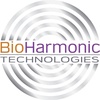Technological developments in the healthcare industry are always pushing the envelope of what was previously considered possible. Photobio modulation laser therapy is one such advancement that is transforming medical care. This innovative method makes use of light's ability to promote healing and reduce pain in a range of ailments. We will examine the amazing potential of PBM laser treatments in this blog post, including their mechanisms of action, various medical applications, and the revolutionary effects they are having on patient care.
I. Understanding Photo Bio Modulation Laser Therapy
Photobiomodulation, sometimes referred to as cold laser therapy or low-level laser therapy (LLLT), is a biologically varying process that uses particular light wavelengths to interact with tissue. PBM lasers are non-invasive, produce low levels of light, and do not produce heat like high-powered lasers used in surgery. These lasers promote healing and reduce inflammation by stimulating cellular function at the molecular level, as opposed to cutting or burning tissue.
The photobiomodulation process's mechanism In laser therapy, photobiomodulation is the central idea. Chromophores in the body, like cytochrome c oxidase in the mitochondria, absorb light when it is applied at the right wavelength. A series of biochemical reactions are set off by this absorption, including an increase in adenosine triphosphate (ATP) synthesis, a change in reactive oxygen species (ROS), and the activation of signaling pathways linked to tissue repair.
II. Applications Across Medical Fields
Because of its adaptability, PBM laser therapy can be used in a variety of medical specialties and provides a non-invasive complement to or alternative to conventional treatments. Photo Bio Modulation lasers are having a major impact in a number of important areas, including:
A. Pain Management
The treatment of both acute and chronic pain is one of PBM laser therapy's most well-established uses. PBM lasers have the ability to target injured or inflammatory tissues, which can lessen pain perception and hasten healing. PBM treatment has demonstrated encouraging results in treating conditions like musculoskeletal injuries, neuropathy, and arthritis, offering patients relief and enhancing their quality of life.
B. Wound Healing
In wound care, expediting the healing process is crucial, especially for patients with chronic wounds or impaired healing capacities. It has been discovered that PBM laser therapy improves blood circulation, boosts collagen synthesis, and promotes tissue regeneration—all of which hasten wound closure and lower the risk of complications. PBM lasers provide a non-invasive way to speed up healing and reduce scarring in a variety of situations, including diabetic ulcers and surgical incisions.
C. Dermatology
PBM laser therapy is used in dermatology to treat a number of skin diseases, such as dermatitis, psoriasis, and acne. PBM lasers can minimize redness and swelling, improve the appearance of the skin, and increase the effectiveness of topical treatments by regulating inflammation and encouraging cellular turnover. Furthermore, PBM treatment has demonstrated potential in promoting hair growth for people with alopecia or thinning hair, providing a non-surgical approach to treating hair loss.
D. Sports Medicine
Musculoskeletal disorders and injuries are common among athletes, and they can impair their performance and increase recovery time. In sports medicine, PBM laser therapy has shown to be an effective tool for treating injuries related to athletics, including sprains, strains, and tendinitis. PBM therapy can speed tissue repair and rehabilitation by focusing on particular pain and inflammatory areas, enabling athletes to resume training and competition sooner.
III. Transforming Patient Care
With so many benefits over traditional treatments, the use of Photo Bio Modulation laser therapy in clinical practice is changing the face of patient care. Among the main advantages of PBM therapy are:
-
Non-Invasive: Because PBM laser treatments don't involve needles or incisions, there is less chance of complications and less discomfort for patients.
-
Safe and Painless: PBM therapy is appropriate for patients of all ages because it is safe, painless, and free of serious side effects, in contrast to pharmaceutical interventions or surgical procedures.
-
Cost-Effective: PBM laser therapy can be a more affordable option than long-term drug use or surgical procedures, especially for conditions that need continuous care and management.
-
Accelerated Healing: PBM therapy expedites healing and fosters functional recovery by focusing on the underlying cellular mechanisms involved in tissue repair, enabling patients to return to their regular activities sooner.
Conclusion
Utilizing light's ability to promote healing and reduce pain in a variety of medical conditions, photobiomodulation laser therapy is a paradigm shift in the field of medicine. PBM therapy is a safe, efficient, and cost-effective treatment option for patients and healthcare providers due to its non-invasive nature, low side effects, and wide range of applications. We can anticipate PBM therapy's broad acceptance and integration into conventional clinical practice, which will further improve patient care and improve healthcare outcomes, as research into its mechanisms and possible applications continues.
Recall that adopting cutting-edge technologies like photobiomodulation laser therapy is the first step toward changing healthcare and opening the door to a better and healthier future for everybody.

No comments yet